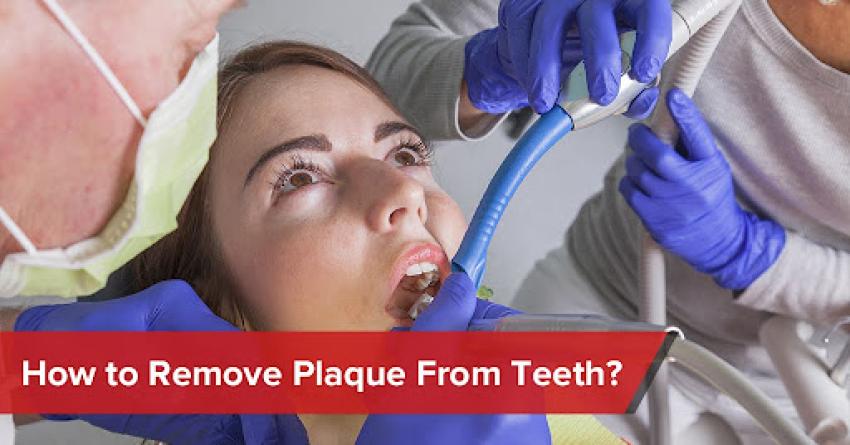
Did you know that everyone has plaque on their teeth to some degree? This sticky film forms naturally due to bacteria present in the mouth. While it's completely normal, managing plaque buildup through proper oral hygiene is important. If you don’t keep it in check, plaque can harden into tartar, which can make your oral health worse. Let’s dive into how plaque impacts your teeth and what you can do to keep your smile fresh and clean.
What Causes Plaque?
Plaque is a sticky film that builds around your teeth, mostly near the gumline. Plaque on your teeth forms when bacteria break down the sugars and carbs in the food and drinks you consume. The breakdown of sugars leads to the release of acids that coat your teeth.
What is the Difference Between Plaque and Tartar?
Plaque is a soft film of bacteria; on the other hand, tartar is a hardened form of plaque. Plaque turns into tartar if not cleaned regularly, and it can only be removed by a dentist through professional cleaning.
Plaque is usually a white or pale yellow film, while tartar can appear yellow or brown and may be visible as a discoloration on the teeth.
Can Plaque be Cured?
It's not possible to completely eliminate plaque, as it will continue to form as you eat. However, you can effectively remove it by regularly flossing and brushing your teeth. This routine helps control plaque growth. If plaque hardens into tartar, you will need to have it removed professionally by a dentist.
Best Practices to Remove Plaque
Experts recommend brushing your teeth at least twice a day to help control plaque buildup. To ensure optimal oral hygiene, it's crucial to replace your toothbrush every four months or even sooner if you notice the bristles becoming frayed. A worn-out toothbrush is less effective at removing plaque and bacteria, potentially leading to dental issues. By regularly replacing your toothbrush, you can maintain a healthy and beautiful smile.
Generally, electric toothbrushes are known to remove plaque more effectively than traditional toothbrushes.
How to properly brush your teeth?
1. Begin from the outer surface of your teeth. Take proper time to gently brush your upper and lower teeth without missing any hard-to-reach spots.
2. Now, it's time to brush against the gumline, as it consists of trapped minute food particles and plaque. To effectively clean your teeth, make sure to use gentle, tooth-wide strokes, moving the toothbrush back and forth across the surface of each tooth.
3. Then, move on to the inner surface of your teeth. This part is highly vulnerable to plaque. Many people miss this part, but it's very important to brush the inner part the same way you brush your outer side-facing teeth.
4. Now, clean the chewing surface of your teeth. Use short back-and-forth strokes to remove the minute food particles stuck on the tops of your teeth, especially the ones that are present at the back of your mouth.
5. At the end, you can also brush your tongue to ensure odourless and bacteria-free freshness.
You should brush your teeth for two minutes.
How to Prevent Dental Plaque?
Apart from brushing your teeth properly and regularly, you can include the following in your routine to prevent plague:
If you are facing the issue of growing plaque despite regularly brushing your teeth, you might not be doing it properly. Here is the proper technique you should follow:
1. Floss every day to eliminate the plague stuck between teeth.
Is it OK to not floss with braces?
Yes, it is absolutely OK to floss with braces, and it’s actually very important! If you neglect to floss while wearing braces, food particles can become trapped in the wires and brackets, creating the perfect breeding ground for bacteria. This can lead to a significant accumulation of plaque, which can ultimately result in the development of cavities and gum disease.
Flossing with braces may require a bit more effort, but it's essential for maintaining optimal oral health. Here are some practical tips to make flossing with braces a smoother process:
Use Floss Threaders: These are small tools that help guide the floss underneath the archwire, making it easier to floss between your teeth.
Orthodontic Floss: This type of floss is often waxed and thicker, making it easier to slide between the teeth and brackets.
Interdental Brushes: These tiny, cone-shaped brushes are perfect for cleaning between teeth and around braces.
Water Flossers: A helpful supplement to traditional flossing, water flossers use water pressure to clean hard-to-reach areas.
2. Mouthwash: An alcohol-free antimicrobial or fluoride mouthwash can reduce plaque, kill bacteria, and strengthen teeth.
3. Limit Sugary Foods: Minimize sugary snacks, sodas, and sticky foods, as they feed bacteria and contribute to plaque buildup.
4. Stay Hydrated: Drinking lots of water helps wash away food bits and bacteria, cutting down on plaque buildup.
5. Eat Well: A balanced diet with plenty of fruits, veggies, and whole grains supports healthy teeth. Crunchy foods like apples and carrots even help clean your teeth naturally.
6. Chew Smart: Sugar-free gum boosts saliva, which helps neutralize acids and get rid of food particles.
7. Get Professional Care: Regular dental check-ups and cleanings every six months are key to getting rid of plaque and tartar that brushing and flossing can’t always reach.
Can Dentists Treat Plaque?
If your teeth appear fuzzy and you feel frustrated despite trying various solutions, it's time to schedule an appointment with Emergency Dental 365. Our experienced dentists can help eliminate stubborn plaque and tartar. They will also recommend foods that promote good oral hygiene and treatments to stimulate saliva production.




